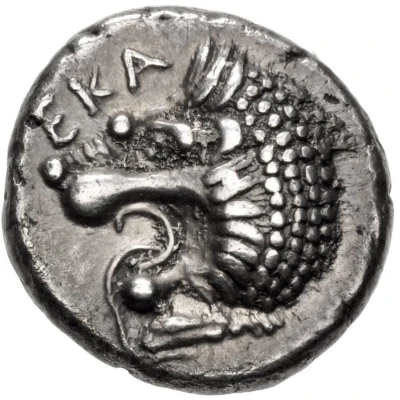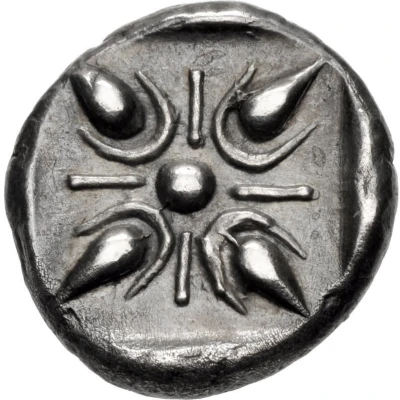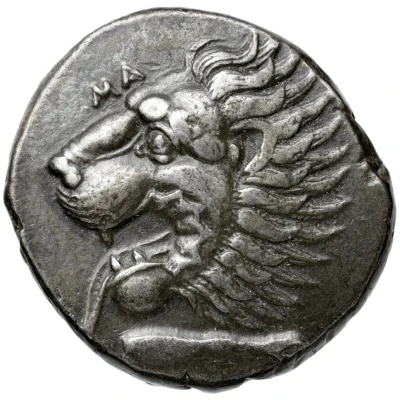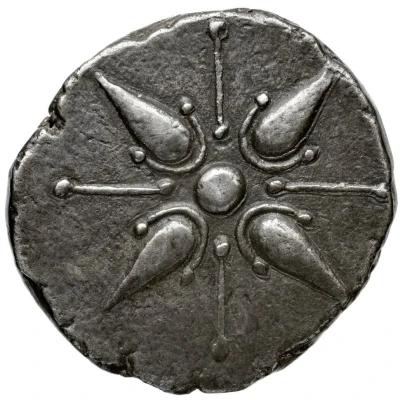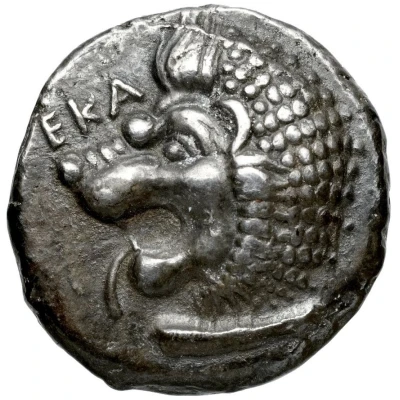
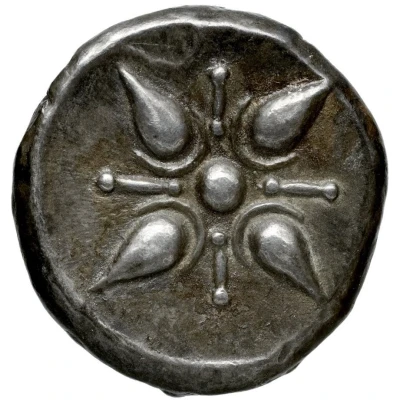

© Bibliothèque nationale de France / Gallica
Tetrobol - Hecatomnus Mylasa 392 BC - 377 BC
| Silver | 4.20 g | 16 mm |
| Issuer | Achaemenid Satrapy of Caria (Achaemenid Satrapies) |
|---|---|
| Satrap | Hecatomnus (395 BC - 377 BC) |
| Type | Standard circulation coin |
| Years | 392 BC - 377 BC |
| Value | Tetrobol (⅔) |
| Currency | Drachm (550-330 BCE) |
| Composition | Silver |
| Weight | 4.20 g |
| Diameter | 16 mm |
| Shape | Round (irregular) |
| Technique | Hammered, Incuse |
| Orientation | Variable alignment ↺ |
| Demonetized | Yes |
| Updated | 2024-10-10 |
| Numista | N#423116 |
|---|---|
| Rarity index | 100% |
Reverse
Stellate pattern in circular incuse.
Interesting fact
One interesting fact about the Tetrobol coin is that it features the image of a Persian king, possibly Hecatomnus, on one side, and an owl on the other. The owl was a symbol of wisdom and prosperity in ancient Persian culture, and its presence on the coin may indicate that the king was seen as a wise and prosperous ruler.
